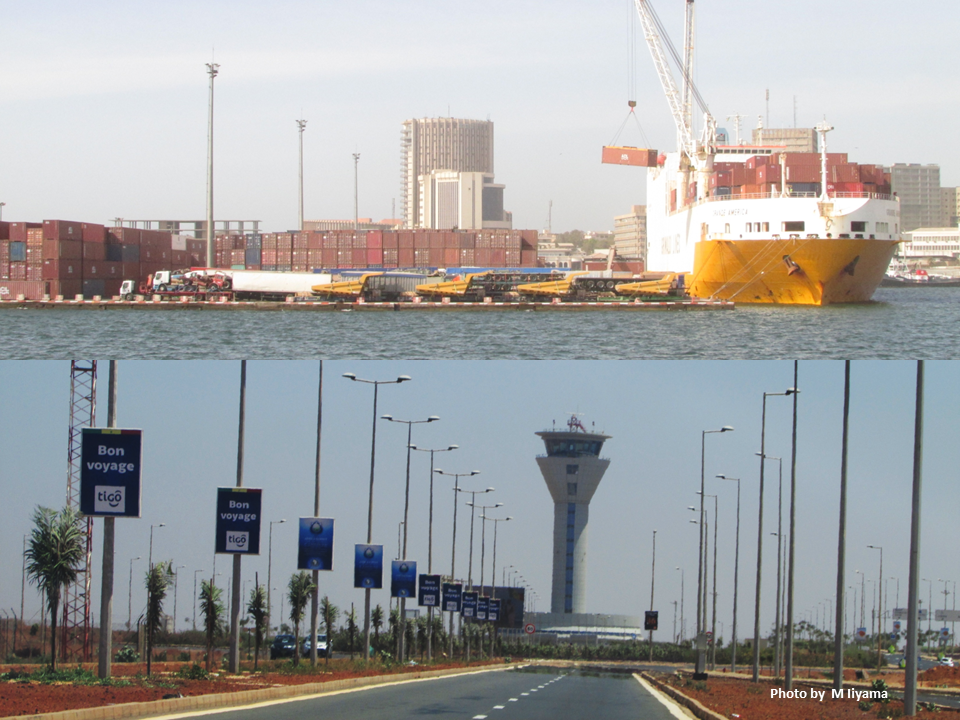Pick Up
1288. Food Security in Africa and the Challenges of Transportation and Logistics

1288. Food Security in Africa and the Challenges of Transportation and Logistics
Food production in Africa has increased over the past two decades. Strangely, however, so has the number of food-insecure people. This problem is exacerbated by poor transportation networks, low surplus production in many countries, and high transportation costs. A World Bank report sheds light on the connections between transportation, logistics, and food security in Africa, and suggests ways to increase the resilience of food systems.
Africa generally imports food from overseas markets rather than within the continent. Intracontinental trade accounts for only 5% of Africa's grain trade, and accessing food takes up to 10 times longer than in developed regions. The report explores the link between transportation and food insecurity, pointing out the challenges of the continent's food supply chain, from local to international.
Poor rural road access. Lack of access isolates farmers from markets. Around 60% of Africa's rural population lives more than 2 kilometers away from an all-season road. Inefficient rural transport networks slow food distribution and increase costs. Farmers struggle to access fertilizer and seeds, leading to persistently low productivity and production, which in turn contributes to food insecurity.
High cost of transport services. In some countries, market distortions in transport services have led to monopolistic practices, enabling a few operators to inflate prices. This limits affordable transport for farmers and consumers, exacerbating food security risks. Weak infrastructure, including a poor national road network, makes the country vulnerable to damage from extreme weather events. Farmers in remote areas face significant challenges in transporting goods to market, especially during the rainy season.
Regional trade barriers. At the regional level, trade in staple foods between African countries is limited. Non-tariff barriers (NTBs), such as bureaucratic delays, increase regional trade costs by 8-25%, further fragmenting markets. As a result, food surpluses in one country or region often do not reach neighboring regions.
Long supply chains. Due to production shortfalls and inefficient distribution, Africa is highly import-dependent, importing up to 25% of its food, even when neighboring countries have food surpluses. Food travels an average of 4,000km, taking up to 10 times longer to transport compared to developed regions of the world. Inefficiencies, with only 52 of the 138 ports equipped to handle large quantities of food, leading to delays, congestion, and rising costs.
Limited storage. Finally, Africa’s food supply chains operate largely on a “just-in-time” basis, with limited food reserves for emergencies and supply shocks from global markets. Limited storage capacity, with less than 30% of annual production stored, has led to significant post-harvest losses. Approximately 7% of locally produced food is wasted due to inadequate storage and cold chain infrastructure.
The report presents practical recommendations for Africa to leverage transport for food security:
- Maritime transport, ports and transport corridors. Modernize and refurbish critical ports to improve efficiency and reduce delays. This includes streamlining customs and border controls to enhance the flow of goods, reducing both costs and time. Investments in key regional corridors are essential to efficiently link surplus and deficit regions.
- Addressing non-tariff barriers (NTBs). Address inefficiencies in intra-African trade and reduce dependency on foreign imports. Coordination and implementation of trade policies with a focus on NTBs within and between Regional Economic Communities (RECs) will help reduce costs and facilitate border trade between African countries.
- Increasing efficiency in transport services. This will increase competition and provide capital for new trucking operators to enter the market. Addressing the common problem of empty trucks is also important. Electronic cargo platforms that match real-time demand and supply can help reduce this inefficiency. There is clear evidence that a 10% reduction in transport costs can increase trade volumes by 25% and revitalize regional economies.
- Strengthening regional and national connectivity. Maintain and improve existing roads. Expanding access to all-weather roads will connect rural farmers to markets and stabilize food distribution.
- Developing transport infrastructure that can withstand disruptions from severe weather and other disasters. Strengthen rural logistics to ensure efficient delivery of critical inputs such as fertilizer and seeds.
- Building storage facilities. Develop modern storage facilities to minimize post-harvest losses and stabilize food supply chains. Investing in local cold chain infrastructure can help reduce food waste.
(Reference)
Kunaka, Charles; Abate, Megersa Abera; Lonla, Théophile Bougna; Molla, Kisanet Haile. 2025. Transport Connectivity for Food Security in Africa: Strengthening Supply Chains. © World Bank. http://hdl.handle.net/10986/43194
Contributor: Miyuki IIYAMA, Information Program
